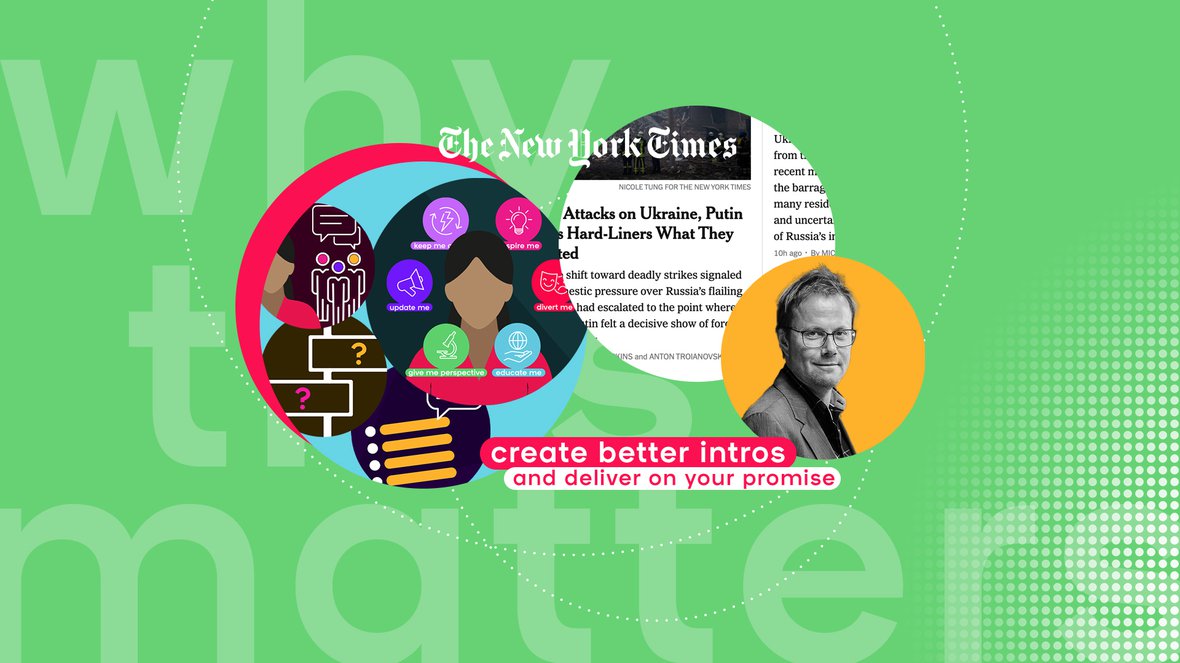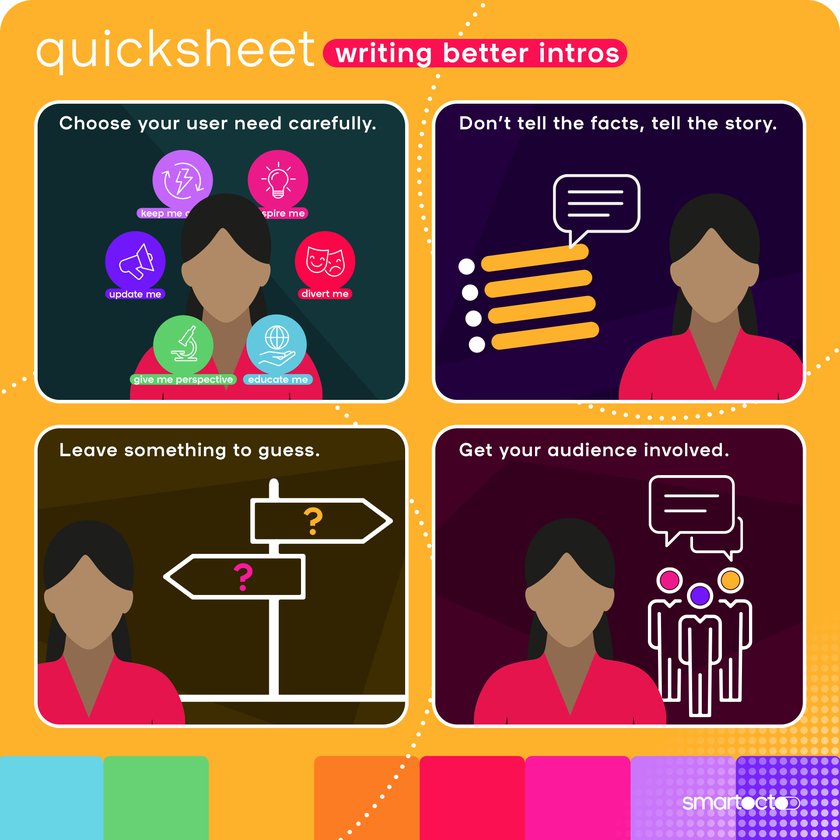The first few lines of an article need to grab the reader’s attention. Here, for example, we’ll promise to furnish you with tips and tricks to hook your readers from the start. Ready? Let’s go.
Should an intro be a reflection of the article? Should it be a summary of all the facts, or is it more like a teaser? While these are interesting questions, we’d argue that the most important thing to consider is this: how can you ensure people will keep reading your story past the introduction?
It’s not only about the intro of course. “The story needs to live up to the promise of the headline and intro”, Gerbert van Loenen says. He’s head of The Campus, the Training & Innovation department of Belgium-Dutch publisher DPG Media, and (helpfully for us) he also trains journalists in writing better introductions.
“The articles with the worst performance are usually the articles with a diffuse intro. What can your readers expect? Is it a political analysis, or is it a review of a restaurant? When people don’t know, they drop out.”



